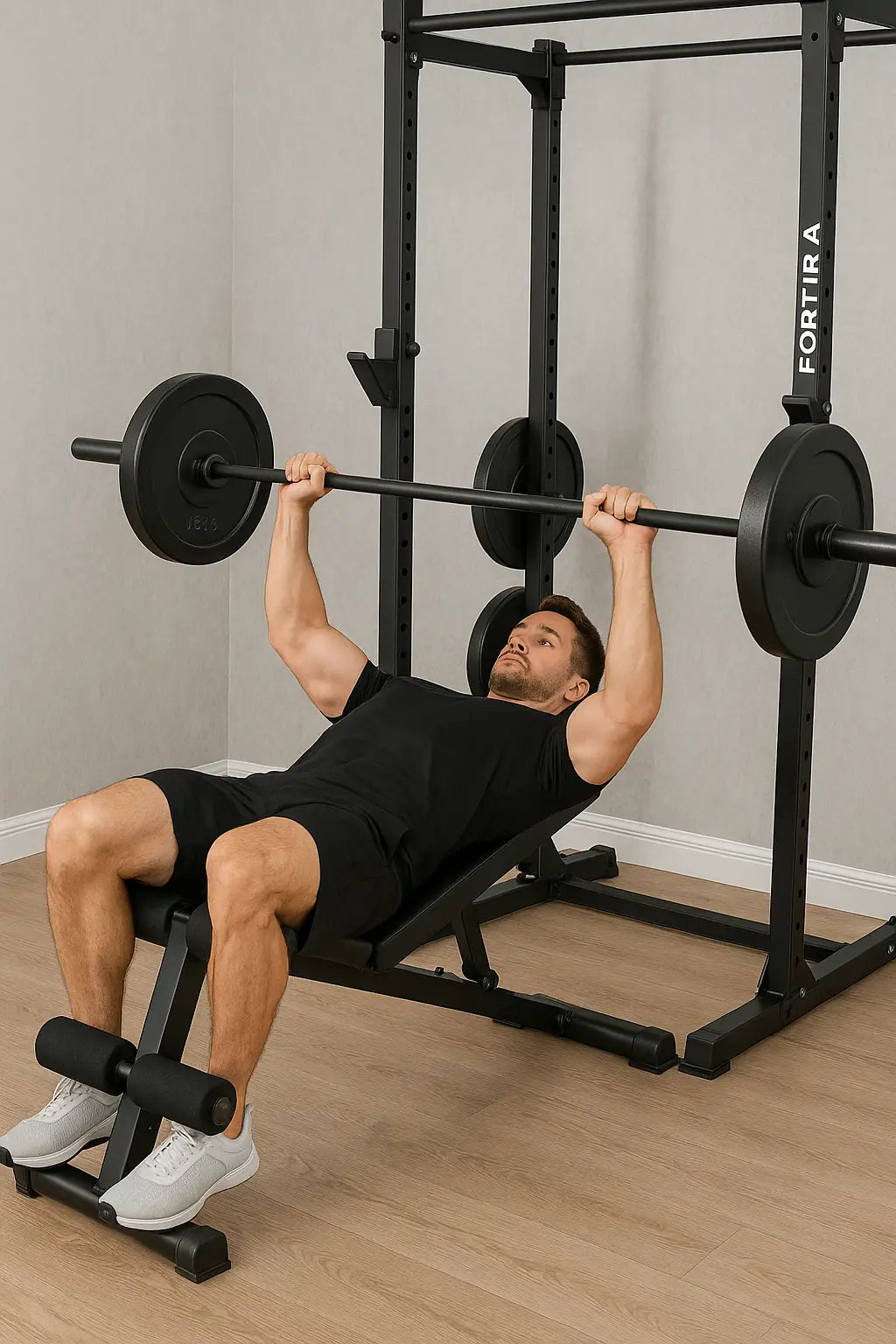
Decline Bench Press: The Complete Guide (Form, Muscles, Variations, Programming)
Share
When you think of a strong, sculpted chest, the flat bench press usually gets all the credit—but if you really want that carved-out lower-chest definition, the decline bench press is your secret weapon.
Whether you’re a gym regular or building a compact home setup, mastering this movement will help you hit chest fibers you didn’t even know you had.
What Is the Decline Bench Press?
The decline bench press is a chest-press variation where the bench is tilted downward—typically 15°–30°. This angle changes the pressing path so the bar (or dumbbells) travels toward your lower chest instead of mid-pecs.
Compared to the flat or incline versions, this decline position:
- Reduces front-shoulder strain
- Emphasizes the lower pectoral region
- Engages the core more for stability
You can perform it with a barbell, dumbbells, Smith machine, or resistance bands—each adds a slightly different challenge.
Benefits of the Decline Bench Press
-
Targeted Lower-Chest Activation
The downward angle perfectly isolates the lower pec fibers that are often under-developed. -
Shoulder Relief
Lifters with shoulder discomfort on flat presses often find decline work more comfortable. -
Stronger Triceps and Core Stability
Because of the angle, your triceps and core muscles must work harder to control the descent and press phase. -
Balanced Chest Aesthetics
Many people have over-developed upper pecs; decline presses restore proportion for that full, square-chest look.
Muscles Worked During the Decline Bench Press
- Primary: Lower Pectoralis Major (sternal head)
- Secondary: Triceps Brachii, Anterior Deltoids, Core Stabilizers

How to Do the Decline Bench Press (Step-by-Step Form Guide)
1. Adjust Your Bench
Set the bench at a 15°–30° decline. Secure your legs under the foot pads so you don’t slide.
2. Grip and Setup
Grab the bar slightly wider than shoulder width. Keep wrists straight and shoulder blades retracted.
3. Lower With Control
Slowly bring the bar to your lower chest (around the bottom of your sternum).
4. Press and Squeeze
Drive the bar upward and slightly inward until your arms are fully extended.
5. Breathe and Brace
Inhale while lowering, exhale while pressing. Keep your core tight throughout.
Pro Tip: Visualize pushing the weight through your elbows rather than your hands. This enhances chest recruitment.
Common Mistakes to Avoid
- Too steep of a decline angle: Over 30° shifts work to your shoulders.
- Bouncing off the chest: Always control the negative.
- Partial reps: Use full range for optimal growth.
- Loose wrist alignment: Keep wrists stacked directly above elbows.
- Ignoring warm-up: Shoulder mobility drills prevent strain.
Variations and Alternatives
-
Dumbbell Decline Bench Press
Great for improving balance and eliminating left-right imbalances. -
Smith Machine Decline Press
Provides safety and stable bar path—ideal for heavy lifting. -
Decline Push-Ups
A bodyweight alternative that mimics the same lower-chest activation. -
Resistance-Band Decline Presses
Perfect for home setups or travel workouts.
How to Program the Decline Bench Press
Your goal determines your programming:
|
Goal |
Sets × Reps |
Rest Time |
Focus |
|
Strength |
4–6 × 4–6 |
2–3 min |
Heavy barbell, low reps |
|
Hypertrophy |
3–4 × 8–12 |
60–90 sec |
Moderate weight, slow tempo |
|
Endurance |
3 × 15–20 |
30–45 sec |
Lighter weight, controlled movement |
Progressive overload is key—add small increments weekly, track your numbers, and watch your lower chest fill out fast.
Sample Weekly Chest Routine:
- Monday – Flat Bench Press (Strength)
- Wednesday – Incline Dumbbell Press (Hypertrophy)
- Friday – Decline Bench Press (Primary Focus)
Equipment Setup and Recommendation
If you’re training at home, the right bench makes all the difference.
We recommend the Fortira Fit Adjustable Weight Bench Press for Full-Body Workout.
Its multi-angle adjustability lets you shift seamlessly between flat, incline, and decline positions—perfect for targeting your lower chest without needing multiple machines. Built for durability and comfort, it supports both beginners and advanced lifters.

Safety and Injury Prevention Tips
- Always use a spotter when pressing heavy.
- Keep the bar path over lower chest, not neck.
- Warm up your shoulders with rotations or band pull-aparts.
- Avoid locking out hard at the top—stay fluid.
FAQs About the Decline Bench Press
1. Is the decline bench press necessary for chest growth?
Not mandatory, but it ensures full pec development and symmetry.
2. What angle is best for decline pressing?
15°–30° offers maximum lower-chest activation with minimal shoulder stress.
3. Should I do decline before or after flat bench?
Do it after flat or incline to isolate the lower chest once you’ve pre-fatigued upper fibers.
4. Can I replace flat bench with decline?
If shoulder comfort is an issue, yes—decline pressing can safely become your main horizontal push.
5. What weight should I start with?
Use about 70 % of your flat-bench load to learn form before progressing.
Final Thoughts
The decline bench press might not be as flashy as the flat bench, but if your goal is a well-rounded, lower-chest-dominant physique, it’s irreplaceable. Proper angle, form, and consistency transform it from a forgotten accessory lift into a cornerstone movement.
Ready to elevate your home chest training? Build your lower pecs safely and effectively with the Fortira Fit Adjustable Weight Bench Press—engineered for real results in minimal space.
